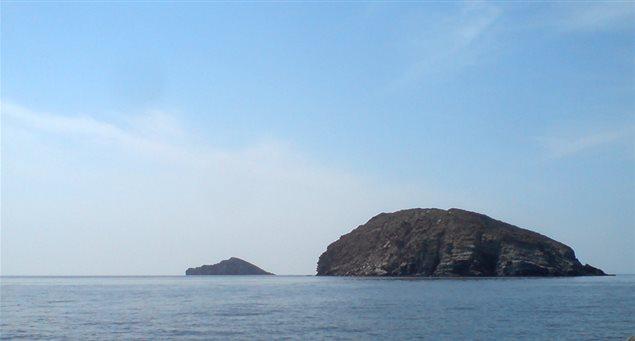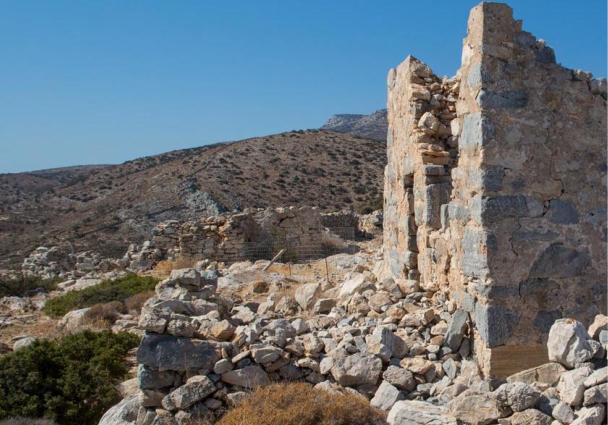
Big Avelas and Small Avelas islets.
According to old tales, based on Homer’s Odyssey and told by the elderly on Iraklia, on their way back to Ithaca after the Trojan War Ulysses and his companions made a stopover on the island to pay homage to Zeus, the king of the gods whose shrine was located at Livadi.
In order to protect their boat from strong winds, they rowed to Alimia beach, where they anchored for the night.
As they started climbing up the hill the next day, none of them suspected that in the caves beyond lived Polyphemus, the one-eyed giant Cyclop, son of the god of the sea Poseidon.
Together with his brothers he kept a huge herd of sheep.
One of the two caves was very big but Polyphemus had never been inside it because its entrance was so narrow that only the sheep could pass through the small opening.
Even today, you have to crawl for a distance of about five or six meters before entering the first chamber of the big cave.
Polyphemus’ cave (the smaller one with the big entrance) is just an opening in a huge rock and is now used for shade.
Polyphemus heard Ulysses and his companions approach the hill and thought they were invaders coming to steal his sheep.
“Who are you, strangers, and what paths of the sea do you come from? Are you wandering for a living or wandering by chance, like the thieves who sail the seas and bring woe to strange lands and play with their lives?”
He captured them and imprisoned them in the large cave.
Resourceful as he was, Ulysses quickly devised an escape plan. He and his mates blinded Polyphemus’ one eye and made their way out of the cave by hanging from the underbelly of the sheep.
When Polyphemus discovered the escape, he was enraged and started throwing huge rocks, hoping to sink the ship.
He missed the target and the rocks are known today as the The Big Avelas and The Small Avelas islets.
One of the rocks fell into the shallow waters of Karvounolakos beach where it can still be seen.


